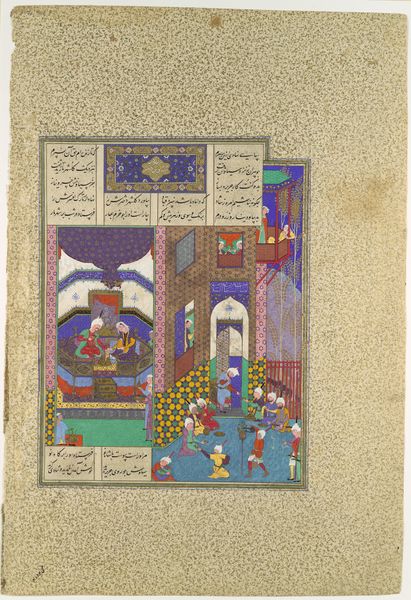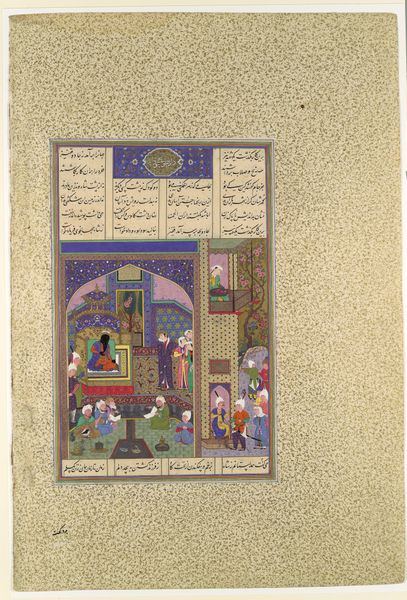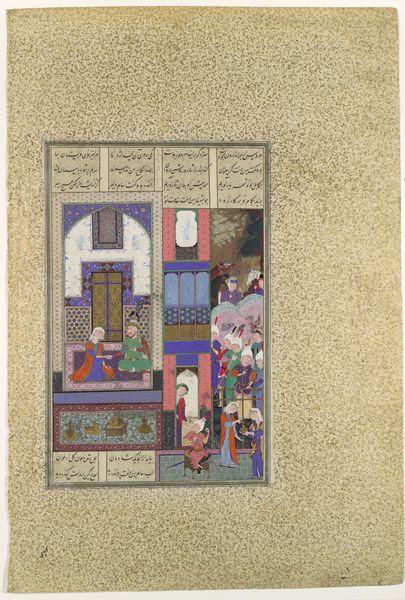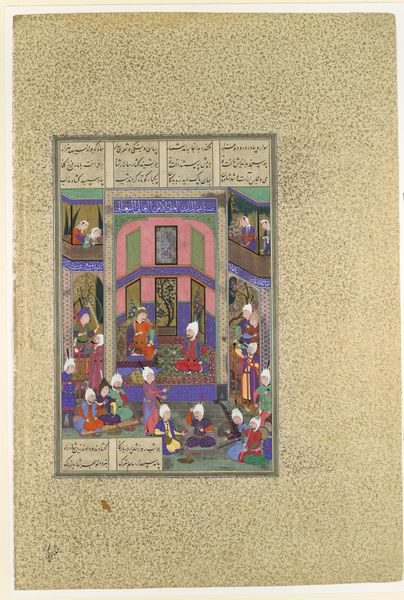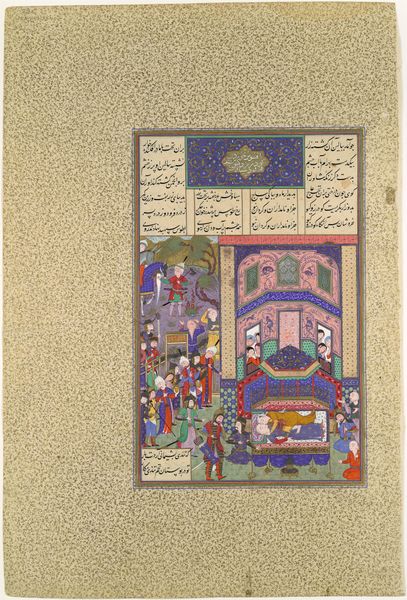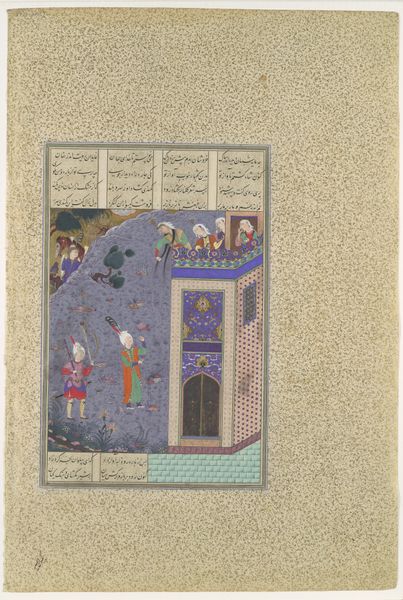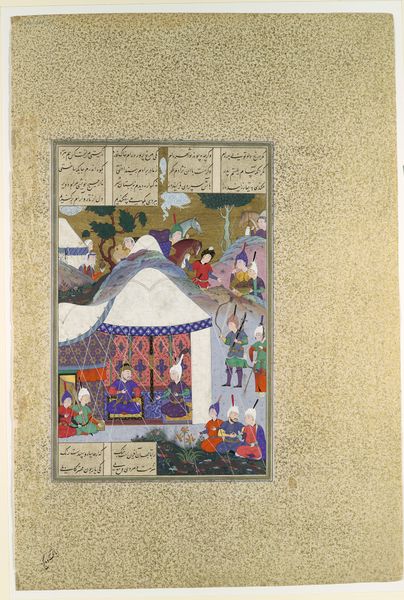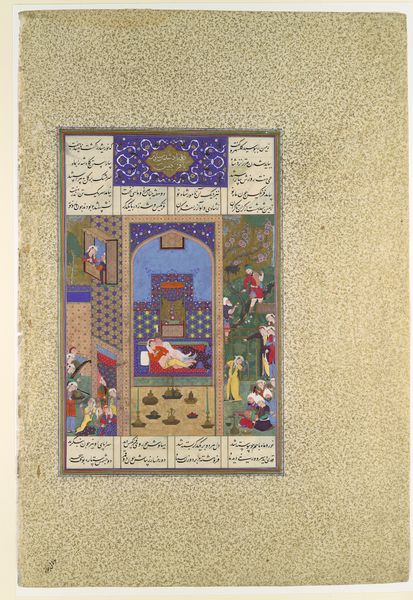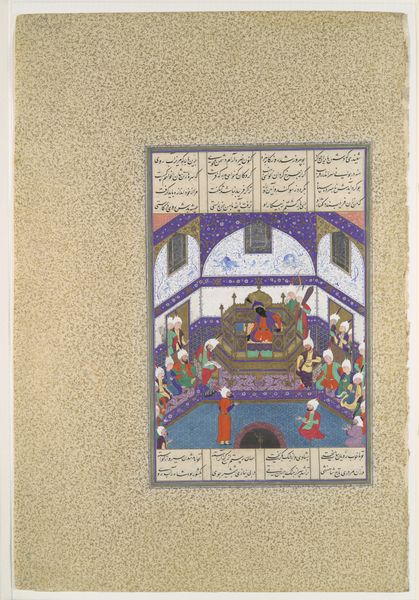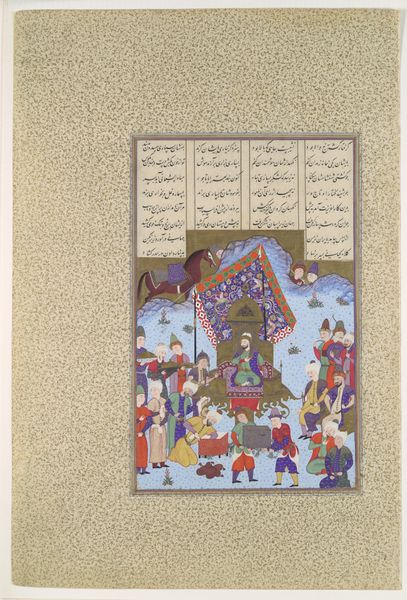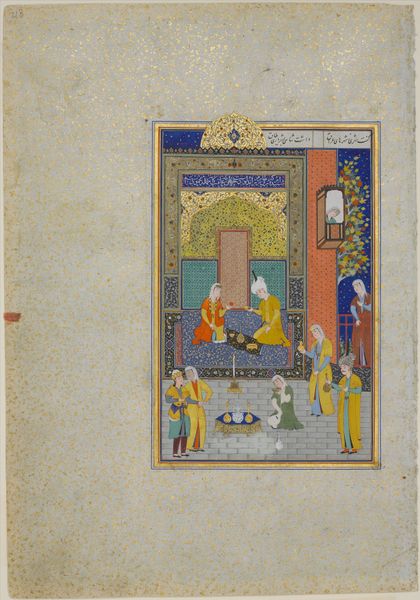
"The Shah's Wise Men Approve of Zal's Marriage", Folio 86v from the Shahnama (Book of Kings) of Shah Tahmasp 1500 - 1555
0:00
0:00
tempera, painting
#
portrait
#
narrative-art
#
tempera
#
painting
#
asian-art
#
men
#
islamic-art
#
history-painting
#
miniature
Dimensions: Painting: H. 12 1/2 in. (31.8 cm) W 7 3/16 in. (18.3 cm) Page: H. 18 1/2 in. (47 cm) W. 12 9/16 in. (31.9 cm) Mat: H. 22 in. (55.9 cm) W. 16 in. (40.6 cm)
Copyright: Public Domain
Editor: We're looking at "The Shah's Wise Men Approve of Zal's Marriage," a tempera painting, part of the Shahnama, dating from 1500 to 1555. It’s wonderfully detailed, almost jewel-like in its intricacy. All the figures seem to be engaged in some sort of negotiation, yet their faces remain rather stoic. What stories do you see woven within the painting's layers? Curator: It is a scene brimming with layered cultural narratives. This imagery stems from the Shahnama, a cornerstone of Persian identity and artistic expression. Notice the composition. The arrangement isn’t just about aesthetics; it reflects a symbolic hierarchy. The Shah is elevated, while others are placed in ways denoting their status. How do the gestures and expressions play into conveying social harmony and diplomatic discussion? Editor: I hadn’t considered the placement of figures as conveying rank. It strikes me now how static they are, even in conversation. What's the significance of the turbans everyone wears? They seem very uniform. Curator: Indeed, consider how cultural memory is often subtly encoded within attire. Turbans in this era indicated not just social status, but also lineage, religious affiliation, and even tribal identity. They serve as a visual shorthand, enabling viewers across generations to instantly decode aspects of the wearers' place in society. Don’t you think the artist uses repetition of such elements to emphasize order? Editor: That’s fascinating. It sounds like reading symbols became second nature. Looking closer, I noticed each pattern, colour, and object might represent layers of understanding. Curator: Precisely. And even beyond their explicit meanings, these images activate what we call ‘cultural memory’, inviting contemplation on themes like power, diplomacy, and identity. I find the ability of symbolic traditions to communicate intricate meanings over centuries to be extremely enriching. Editor: I agree, thinking about it, art becomes like a continuous chain between past and present. It is quite a unique experience when you consider the psychological aspect of connecting and understanding this visual heritage.
Comments
No comments
Be the first to comment and join the conversation on the ultimate creative platform.
